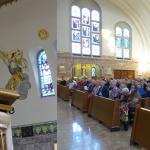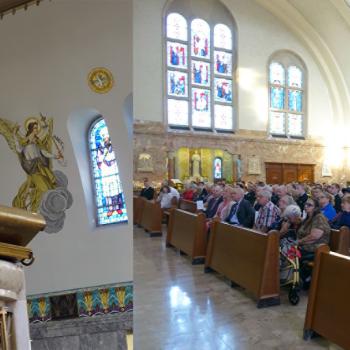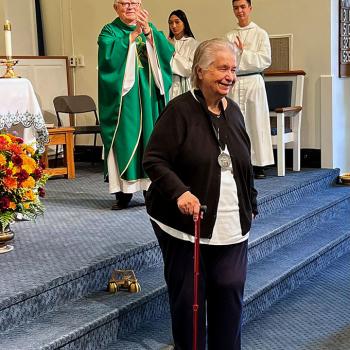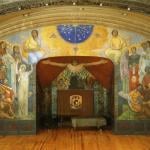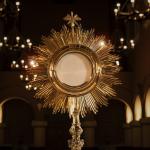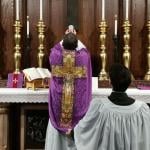In the early centuries of the Church, many Christians wrestled with how to properly understand the divinity of Christ and, by extension, the mystery of the Holy Trinity. While the apostles and early Fathers affirmed the divine nature of the Son and the Holy Spirit, the Church had not yet issued formal dogmatic definitions. This left room for speculation and, unfortunately, the spread of various theological errors. Today, we have the benefit of centuries of reflection and the Church’s official teachings that clarify these mysteries. However, in the early Church, believers and theologians alike were navigating uncharted territory. The need to articulate clearly what had always been believed but not yet defined gave rise to some of the most important doctrinal developments in Christian history.
Among the early challenges to orthodox belief were the heresies of Monarchianism, Sabellianism, Subordinationism, and Arianism. Each of these errors, in different ways, distorted the relationship between the Father, the Son, and the Holy Spirit. Dynamic Monarchianism, for example, taught that the Father alone was truly God and that Christ was a mere man specially filled with divine power or presence—a sort of “adopted” Son (Preuss 126). This view denied Christ’s eternal divinity and reduced Him to a created being uniquely inspired by God rather than God Himself.

Patripassian Monarchianism, a related idea, attempted to safeguard Christ’s divinity but still failed to distinguish adequately between the divine persons. It taught that the Father Himself became incarnate and suffered on the Cross. This view, while affirming Christ’s divinity, blurred the personal distinctions within the Godhead and effectively made the Father and the Son the same person under different names. Sabellianism, also known as Modalism, developed this line of thinking further by teaching that God was one person who merely appeared or “manifested” Himself in three different modes—sometimes as Father, sometimes as Son, and sometimes as Holy Spirit (Garrigou-Lagrange, Ch. 5). In this framework, the three persons were not distinct at all but were simply different expressions of one divine person acting in different roles.
Arianism, on the other hand, took the opposite approach. Rather than collapsing the persons of the Trinity into one, Arius sharply divided them. He denied that the Son was co-eternal or consubstantial with the Father, claiming instead that the Son was a creation—albeit the highest of all created beings—and that there was a time when the Son did not exist. This view inevitably made Christ subordinate to the Father, both in nature and in dignity. The Holy Spirit, in Arian thought, was even further diminished, treated as a kind of divine energy or created force rather than a divine person. Because of these teachings, all these heresies in some way introduced subordinationism—lowering the divinity of the Son and the Spirit and undermining the fullness of the Godhead.
The implications of these errors were not merely academic. They struck at the heart of salvation itself. If Christ were not truly God, then His redemptive death and resurrection could not reconcile humanity to the Father. A created being, no matter how exalted, could not bridge the infinite gap between Creator and creature. The early Church recognized that such teachings threatened the very essence of Christian faith. The bishops, theologians, and faithful alike understood that to misunderstand who Christ is was to misunderstand the Gospel itself.
In response to these challenges, the Church, guided by the Holy Spirit, convened councils to clarify and define what had always been believed. The First Council of Nicaea in 325 AD was pivotal. There, the Church solemnly affirmed that the Son is “of one substance” (homoousios) with the Father—fully divine, eternally begotten, not made. This declaration refuted Arianism and laid the foundation for the Nicene Creed, which continues to serve as a cornerstone of Christian orthodoxy. Later councils, such as Constantinople (381), would further affirm the divinity of the Holy Spirit, completing the Church’s formal articulation of the doctrine of the Trinity.
The development of Trinitarian theology in the early centuries was not the invention of a new belief but the clarification of an eternal truth. Through prayer, debate, and divine guidance, the Church safeguarded the revelation of who God is: one divine essence in three distinct and coequal persons—Father, Son, and Holy Spirit.
Works Cited
Garrigou-Lagrange, Reginald. The Trinity and God the Creator. https://www.ewtn.com/library/THEOLOGY/TRINITY.HTM#05, accessed November 13, 2024.
Preuss, Arthur. The Divine Trinity. https://archive.org/details/divinetrinityad00pohlgoog, accessed November 12, 2024.



